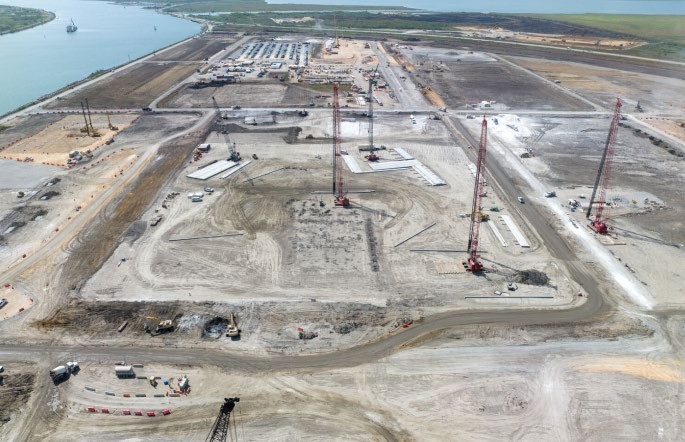LNG player Sempra Infrastructure, a unit of Sempra, won regulatory approval from the US FERC for the second phase of the Port Arthur LNG export project in Texas.
Sempra Infrastructure said in a statement on Thursday the permit is a “major regulatory milestone” for the proposed Phase 2 project, that includes the addition of two liquefaction trains capable of producing up to 13 million tonnes per annum (Mtpa) of LNG.
With Phase 1 currently under construction, the development of the proposed Phase 2 project could increase the total liquefaction capacity of the facility from some 13 Mtpa to about 26 Mtpa.
The proposed project would also include an additional LNG storage tank and marine berth and would benefit from some of the common facilities currently under construction that were previously approved as part of the Phase 1 permitting process, it said.
Carbon capture
Sempra Infrastructure said it continues to evaluate opportunities to develop the entirety of the Port Arthur site while also exploring potential projects to reduce the carbon intensity of its LNG.
Also, the company is leveraging the integrated capabilities of its business segments to develop the proposed Port Arthur Pipeline Texas Connector project, the proposed Post Arthur Pipeline Louisiana Connector project and develop new gas storage facilities, all of which would serve the Port Arthur LNG facility.
To further the advancement of the Port Arthur energy hub, the company recently acquired 38,000 acres of pore space and relevant surface rights to support the proposed Titan Carbon Sequestration project, which is proximal in location to the Port Arthur LNG facility.
The project targets capturing carbon from Sempra Infrastructure’s Port Arthur LNG Phase 1 and 2 projects.
FID
Sempra said that the Port Arthur LNG Phase 2 project is under “active” marketing and development.
“The project could help meet future demand for U.S. LNG supplies expected to serve European, Asian, and other global markets as countries look to enhance energy reliability and security, and displace coal in power production,” it said.
Development of the Port Arthur LNG Phase 2 project and other related projects remains contingent upon completing the required commercial agreements, securing and/or maintaining all necessary permits, obtaining financing, and reaching a final investment decision, Sempra Infrastructure said.
Justin Bird, CEO of Sempra infrastructure, said during Sempra’s second-quarter earnings call last month that the company has made “significant progress” on its LNG strategy and “are very bullish on both Port Arthur Phase 2 and Cameron Phase 2 moving forward next year.”
Construction moving forward on first phase
Sempra Infrastructure took a final investment decision on March 20 for the first phase of its Port Arthur LNG export project worth about $13 billion.
The first phase of the Port Arthur LNG project will have two trains with a total capacity of about 13 million tonnes per annum and two storage tanks with a capacity of 160,000 cbm.
Sempra Infrastructure recently also completed the sale of a 42 percent non-controlling interest in its Port Arthur LNG Phase 1 project to compatriot private equity firm KKR.
Sempra Infrastructure has a controlling 28 percent indirect interest in Phase 1 at the project level, and ConocoPhillips owns the remaining 30 percent interest
US engineering and construction giant Bechtel won the EPC contract for the first phase of the project.
Sempra Infrastructure’s unit Port Arthur LNG said in a recent monthly status report filed with FERC that construction-related activities during August included site clearing, grubbing, stripping, soil stabilization activities, dredging, piling, and maintenance of ECD’s.
During September, Bechtel will continue with site preparation, soil stabilization, and pile driving activities, it said.
The first phase of the project is fully subscribed with 10.5 Mtpa under binding long-term agreements.
Sempra Infrastructure previously entered into long-term agreements with each of ConocoPhillips, Ineos, Engie, RWE, and PKN Orlen.
The expected commercial operation dates for Train 1 and Train 2 are 2027 and 2028, respectively.

